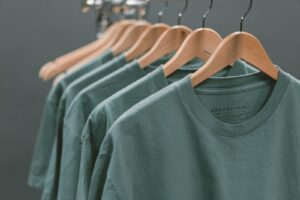Fashion companies need to get off the new-products treadmill and create an ecosystem of services that lets consumers participate in sustainability.
Some practices in the fashion industry should be re-evaluated and redesigned. For starters, rather than focusing almost exclusively on new products, more emphasis should be placed on developing an ecosystem of modern services.
Fashion trends have become increasingly difficult to identify. In addition to designers’ catwalk creations, the opinions and preferences of social media influencers must also be considered. Their posts impact what is popular, and they can change consumer buying behaviours in real time.
So much waste: The fashion industry is, therefore, something of a guessing game when buyers place their orders. But producing goods based only on guesses whether customers will want them is an obvious challenge — with major consequences. The most obvious, and right now perhaps the most circumscribed, is throwing away the clothes that don’t sell. McKinsey & Company estimates that the overproduction in the fashion industry — the difference between what was produced and what is sold — is between 20% and 30%. This means around 92 million tons of clothes are thrown away every year.
This waste is, of course, madness from a sustainability perspective. Therefore, it is important and interesting to think about what the alternatives could be.
Shifting to service: To limit overproduction, the industry needs to adjust production volumes and get better at extending the lifespan of each product. We also need to seriously shift the focus from product to service.
Looking at the volume issue, offering made-to-order services, where the product is manufactured when the demand arises, is a natural way to reduce overproduction. The idea is far from new. Tailoring and made-to-measure are key parts of fashion history. The difference is that existing and upcoming technologies in 3D printing and artificial intelligence are making the process far more cost-effective, so individual customisation becomes available to more people.
Customisation: Already today, companies are individualising their products. Customisation has (at least) two advantages: Added value is created for the consumer, and inventory can be smaller without restricting the consumer’s options.
However, restructuring the industry needs to go further than just-in-time producing the right products in the right volume. It needs to deliver services that let the consumer contribute to more sustainable consumption. Some actors are already in the works, offering second-hand, repairs, rentals and subscriptions.
Empowering consumers: All these initiatives are valuable, but relatively limited so far. They are still about making, selling and, at best, extending the life of a product, rather than giving the consumer the tools to make the all-important decision: to buy or not to buy. To “servicise” this, the ultimate, consumer power would be a huge step in terms of sustainability.
As early as 2026, many products will be equipped with digital product passports containing information on origin, material composition, energy consumption, transport information, climate footprint and more. That information will be easily accessible to every consumer via a QR code or radio frequency identification.
But the information about an individual product is only a small step on the way. It all becomes much more interesting if fashion companies can help consumers map their purchases, make more informed decisions based on broader purchasing patterns, and shop more eco-friendly.
Why not, for example, offer the opportunity to buy fashion in a carbon-neutral way? A service where every individual consumer could get notified if or when they pass a given benchmark for their carbon dioxide emissions. The consumer could be alerted that the limit value has been reached after the last purchase, or that there is still room for more purchases but of more environmentally friendly alternatives. The service could offer alternatives to new purchases, such as renting the product or buying it second-hand.
Sustainable thinking: Opportunities to seriously contribute to a more sustainable fashion industry while creating new revenue streams are there. The industry now needs to rethink its processes and put more focus on an ecosystem of modern services rather than constantly churning out new products. Fashion needs to become a little more modern and retire out-of-season habits.
By Terry Smagh, senior vice president & general manager for Asia Pacific & Japan at Infor
This article was first published by RetailBiz

